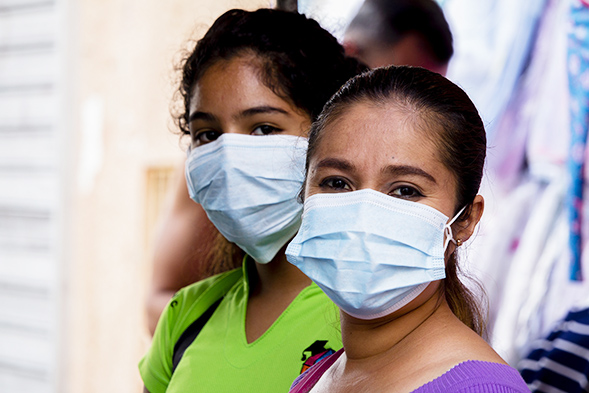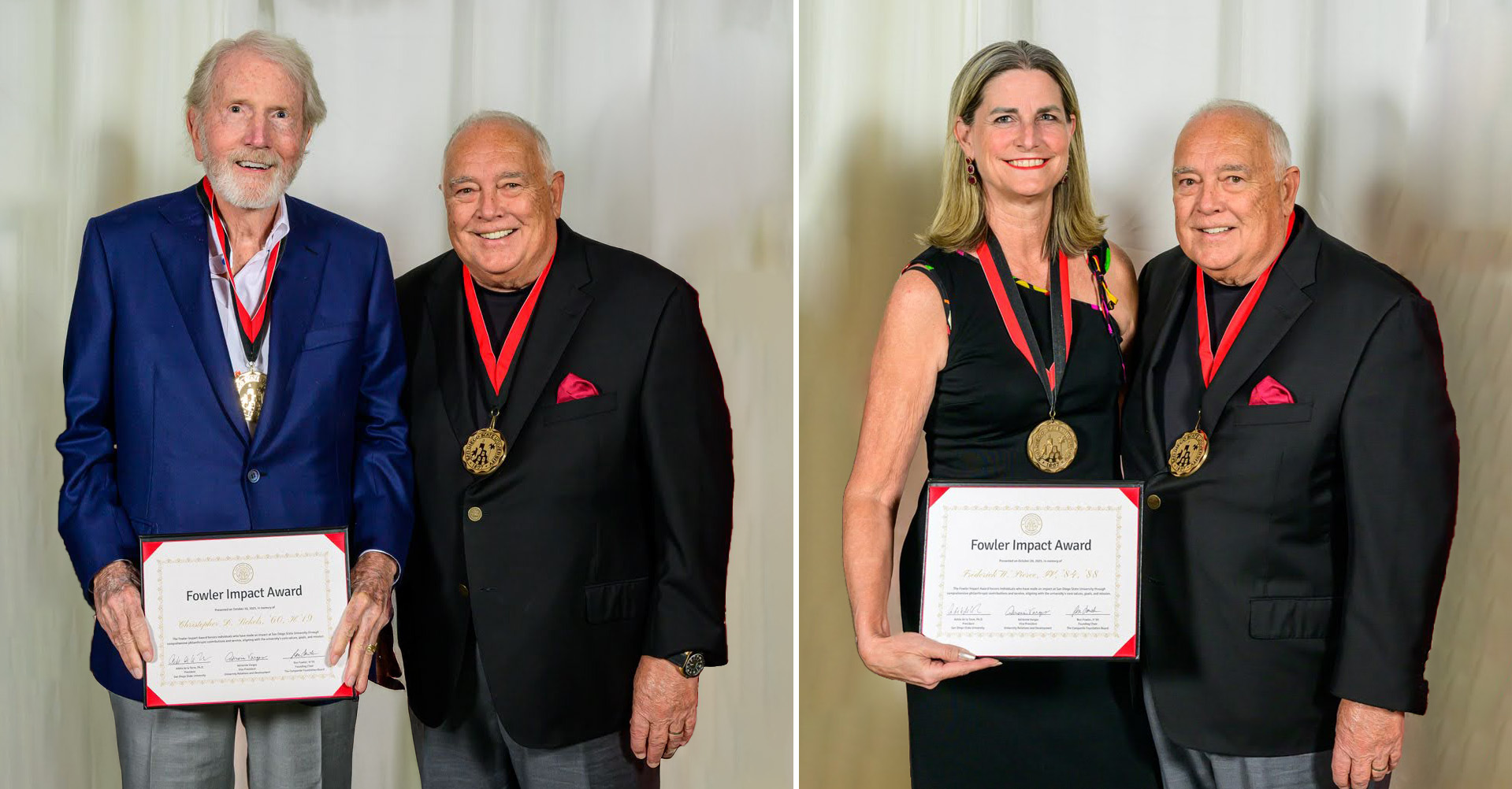New County-SDSU Partnership Expands T3 Strategy in Contact Tracing to Prevent Spread of COVID-19
SDSU will partner with San Diego County HHSA to deploy contact tracing within underserved communities.

Public health faculty at San Diego State University are partnering with the County of San Diego Health and Human Services Agency (HHSA) to advance the county’s COVID-19 T3 Strategy of Test, Trace and Treat in underserved communities in San Diego County, the second most populous county in the state and fifth most populous in the nation.
Through a new contract with SDSU’s School of Public Health and the San Diego Health and Human Services Agency (HHSA) for nearly $3 million over six months, faculty will both train and recruit community health workers and students — about 110 people — to support the county’s disease control activities and to identify individuals believed to have come into contact with those diagnosed with COVID-19.
“Contact tracing will help us reach the community members most in need, to contain the spread of this disease in San Diego County by helping people become aware that they may be at risk for COVID-19 and informing them of actions they need to take,” said Hala Madanat, Distinguished Professor and SDSU’s School of Public Health director.
Madanat is the contract lead for Communities Fighting Covid, working in partnership with Corinne McDaniels-Davidson, SDSU director of the Institute for Public Health, who is the contract co-lead.
The application form will be available on the SDSU School of Public Health’s outreach website on Tuesday, June 9 at 9 a.m. “As a university that owes its identity to San Diego, SDSU wants to be part of the solution,” Madanat said. “We have been working with San Diego communities for many years, and therefore, we want to help address and contain the spread of COVID-19.”
Contact Tracing a Critical Tool
Madanat said SDSU is uniquely positioned to support the regional effort in partnership with the county, given the university’s strengths in partnership, and community-based cross-disciplinary activities.
“SDSU has a close relationship with the San Diego County Health and Humans Services Agency and for many years, we have teamed up on workforce development, student training, research and service,” Madanat said.
Wilma J. Wooten, M.D., M.P.H., County public health officer, noted that contact tracing is an essential strategy in responding to the COVID-19 pandemic and that since May 18, the State’s Roadmap to enter Stage 2 has allowed counties flexibility and discretion to decide when to allow businesses and facilities to reopen.
“It is crucial to the public’s health that we also approach COVID-19 with a diverse and ethnically sensitive contact tracing program that reaches into and gains trust in all of our communities,” said Dr. Wooten. “We have experience with this equity model and are confident that this partnership with SDSU will provide another tool for our ongoing epidemiology disease investigations that are helping control the community spread of COVID-19 and ultimately save lives.”
Over the course of the contract, public health faculty and staff will train community health workers to act as points of contact to underserved communities, tracing and monitoring those who may have been in contact with someone who has tested positive for COVID-19.
“In addition to testing, the importance of quickly and effectively identifying those at risk of contracting the virus to inform them and ensure they follow specific guidelines cannot be underscored enough. These efforts will undoubtedly help us to contain the potential spread of COVID-19,” said SDSU President Adela de la Torre.
“This partnership-based effort is crucial for individual and community health as our city and state move forward with plans to reactivate our economy,” de la Torre said. “Without such measures, we will not be able to recover from COVID-19 on a timeline that will contribute to individual health and a meaningful economic rebound.”
Helping Underserved Communities
The partnership reinforces HHSA’s Live Well San Diego vision, which combines the efforts of partners inside and outside the agency to support the health and safety of all county residents.
The community health worker model is one that has been used for years in various communities and its successes are well-documented in numerous acute and chronic health responses, as well as supporting access to care initiatives.
This new workforce will identify and connect with individuals who have not been reachable by other means. They will start by contacting members of the Spanish and Arabic speaking communities as well as the African American community, and will ramp up to include an additional non-English speaking community that is being most impacted, as defined by public health data.
“By hiring from our diverse communities to help serve our communities, the community health worker model, we will expand our health strategy in protecting public health in communities adversely impacted by COVID-19,” said Nick Macchione, director of the County’s Health and Human Services Agency and architect of the T3 Strategy overseeing the ongoing rollout and expansion of COVID-19 testing, tracing and treatment throughout the region.
When the County HHSA identifies a positive case and follows up to obtain a list of people the patient has been in contact with, the community health workers will be asked to assist with making initial contact with them and advise them to quarantine themselves. SDSU students will make follow-up phone calls to monitor people for COVID-19 symptoms. In addition, community health workers will provide San Diegans in diverse communities with health education and make referrals for testing treatment, and offer other referrals to community-based services as needed.
The team is developing training modules for the contact tracers and all communication material will be translated into Spanish and Arabic. Contact tracers will make up to 37,200 phone calls for initial contact and up to an equal number for follow-up. When shelter-in-place restrictions are lifted, the community health workers will also make up to 4,650 in-home visits, while wearing personal protective equipment.
Madanat and McDaniels-Davidson are in the process of convening a community advisory board to promote and ensure equity throughout the planning and implementation of the program.
"The voices of the communities impacted must be present in every aspect of this program, so that health equity is properly addressed," McDaniels-Davidson said. “It’s important for community members to hear from contact tracers who are from their own community, can understand their culture and their concerns, and be able to relate to them.”
Strong Response and Community Collaboration
The contact tracing effort is one among many that SDSU faculty, staff and students have launched this year in response to the global pandemic. Others include:
- Environmental sampling for the coronavirus in public areas, with the help of 1,000 citizen scientists, by virology researchers, which will be analyzed and developed into models to predict risk and trends in different parts of the county
- A low-cost assisted breathing device that can be assembled with readily available parts to help hospitals in case of a surge in very ill patients needing ventilator assistance
- A comprehensive resource database to help monitor and visualize outbreak patterns in San Diego County using big data, GIS and social media, developed by geography faculty and student researchers.
“Community engagement and community collaboration are among our greatest strengths at SDSU,” de la Torre said. “Our research and teaching community, coupled with efforts our students lead, makes us well-positioned to collaborate with the County in this way. I am especially proud of the many ways our community has introduced new, innovative and meaningful solutions to this global challenge.”


